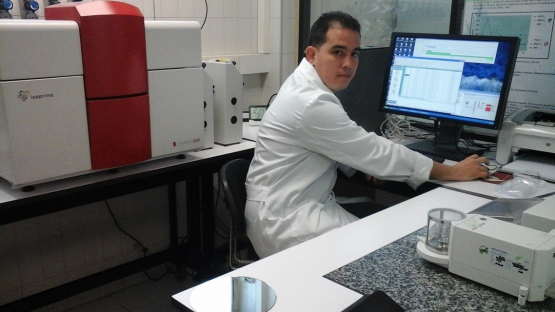The mangrove forests, seagrass beds and thousand-year-old coral reefs of Cuba play host to rare, vulnerable species and commercial fish alike. The coastal ecosystems which surround the island nation are a national resource, providing the sine qua non to Cuba’s tourism, fishing and transportation industries and representing approximately 70% of the national gross domestic product. Unfortunately, the accumulated effect of human activity led to a steady deterioration of these ecosystems, which in turn had a visible effect on Cuba’s economy. By 2013, for instance, rising levels of pollution and coral erosion resulted in a 40% reduction in fishing catches.
Aware of the potential of nuclear techniques to provide insight into the relationship between marine conditions and human activities, the National Vulnerability and Risks Group of Cuba requested IAEA support in carrying out environmental evaluations to help reduce the exposure of Cuban coastlines to manmade phenomena, such as climate change and ocean acidification.
What followed was a five-year-long technical cooperation project which rallied the resources and efforts of international stakeholders, including the UNDP Global Environment Facility and the UNESCO International Centre for Theoretical Physics, with the aim of building the requisite capacities in Cuba for the analysis and monitoring of marine ecosystems. Through the TC project, the IAEA helped to strengthen the analytical infrastructure of the Cienfuegos Environmental Study Centre (CESC)—which is tasked with testing heavy metals, radionuclides and persistent organic pollutants in the local marine environment—by training members of its staff in laboratory instrumentation, as well as in sample preparation, treatment, analysis and reporting.
Following the completion of the technical cooperation project, which was established in 2009 and continued until 2014, the CESC was able to complete over 4000 laboratory assays in environmental matrices of heavy metals, radioactive substances and organic compounds in Cuba’s key coastal ecosystems. Moreover, the industrial effluence and discharge from local power plants, refineries and aquaculture industry were exhaustively studied, and corresponding management actions were designed to minimize the risks they posed to marine habitats.
Two years after the formal completion of the project, however, it is still paying dividends to its stakeholders and participants. On 14 February, a scientific paper developed by two IAEA Technical Cooperation Fellows was published in ‘Nuclear Instruments and Methods in Physics Research,’ a peer-reviewed scientific journal which focuses on data analysis methods. Under the auspices of the national Cuban project, two of the paper’s principal authors, Mr Yasser Morera-Gómez and Mr Carlos Alonso-Hernández were accepted into the TC Fellowship programme—an initiative which makes training opportunities accessible to university graduates and technical experts—and were given instruction in the measurement of stable isotopes using Isotope Ratio Mass Spectrometry (IRMS).
Equipped with the enhanced technical knowledge which an IAEA Fellowship provides, and through collaboration with colleagues at the CESC, Mr Morera-Gómez and Alonso-Hernández devised a new methodology for the calibration of high-resolution detectors. The calibration technique described in their research paper has helped to improve the quality and credibility of the analytical results obtained by the Cienfuegos Environmental Study Centre. Due to their research, made possible by the IAEA's training courses and fellowships, the Centre was able to maintain its existing ISO/IEC-17025 accreditation.



